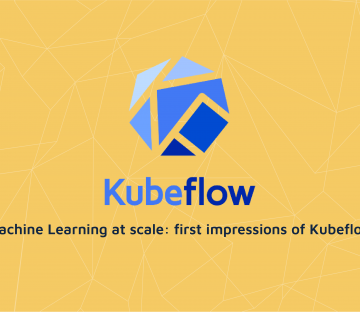22 items found: Search results for "non functional testing" in all categories x


June 15, 2016 | Software Consultancy
It’s as simple as that – and as a consultant, it’s a problem I see all the time. Testing is always focused on functional testing. Non-functional testing, by comparison, is treated like a second class citizen. This means that functional requirements get refined, and non-functional requirements are ignored until the very end.
Drawing on over 6 years of practical experience from the OpenCredo team, you will explore worked examples and learn clear lessons in test automation and agile development. The workshop is ideal for members of development teams working to integrate testing, as well as product owners and business analysts who need a better way of communicating their business objectives. The results will be clearer requirements, faster test feedback, and increased confidence in software quality.


February 4, 2013 | Software Consultancy
This API will in future be used by a mobile client and by third parties, making it important to verify that it is functionally correct as well as clearly documented.
An additional requirement in our case is for the tests to form a specification for the API to allow front and back end developers agree on the format in advance. This is something that BDD excels at, making it natural to continue to use Cucumber. This post will focus on the difficulties of attaining the appropriate level of abstraction with Cucumber while retaining the technical detail required for specification.


April 20, 2021 | Data Engineering, Machine Learning, Software Consultancy
Our recent client was a Fintech who had ambitions to build a Machine Learning platform for real-time decision making. The client had significant Kubernetes proficiency, ran on the cloud, and had a strong preference for using free, open-source software over cloud-native offerings that come with lock-in. Several components were spiked with success (feature preparation with Apache Beam and Seldon for model serving performed particularly strongly). Kubeflow was one of the next technologies on our list of spikes, showing significant promise at the research stage and seemingly a good match for our client’s priorities and skills.
That platform slipped down the client’s priority list before completing the research for Kubeflow, so I wanted to see how that project might have turned out. Would Kubeflow have made the cut?


May 16, 2018 | Microservices
To identify service boundaries, it is not enough to consider (business) domains only. Other forces like organisational communication structures, and – very important – time, strongly suggest that we should include several other criteria in our considerations.


June 15, 2017 | Data Engineering
CockroachDB is a distributed SQL (“NewSQL”) database developed by Cockroach Labs and has recently reached a major milestone: the first production-ready, 1.0 release. We at OpenCredo have been following the progress of CockroachDB for a while, and we think it’s a technology of great potential to become the go-to solution for a having a general-purpose database in the cloud.


March 7, 2017 | Data Analysis, GCP
Google has recently made its internal Spanner database available to the wider public, as a hosted solution on Google Cloud. This is a distributed relational/transactional database used inside for various Google projects (including F1, the advertising backend), promising high throughput, low latency and 99.999% availability. As such it is an interesting alternative to many open source or other hosted solutions. This whitepaper gives a good theoretical introduction into Spanner.


February 16, 2017 | Cassandra
One of the default Cassandra strategies to deal with more sophisticated queries is to create CQL tables that contain the data in a structure that matches the query itself (denormalization). Cassandra 3.0 introduces a new CQL feature, Materialized Views which captures this concept as a first-class construct.
Join Andrew Morgan and Daniel Bryant at OOP Conference 2017! By combining software and business, OOP Conference 2017 is the meeting point for people who work primarily in the enterprise environment. Technical experts (architects, developers, business analysts, and testers), technical (project) managers and leaders gain an excellent view on the state-of-the-art in modern software engineering. […]


January 13, 2017 | Software Consultancy
The notorious FizzBuzz interview test was originally proposed as a way of weeding out candidates for programming jobs who – to put it bluntly – couldn’t program. The task is as follows:
Write a program that prints the numbers from 1 to 100. But for multiples of three print “Fizz” instead of the number and for the multiples of five print “Buzz”. For numbers which are multiples of both three and five print “FizzBuzz”.
It turns out that this problem has just enough subtlety about it to cause headaches to anyone who knows the basics but hasn’t learned how to think in nested structures.


March 2, 2016 | Microservices
Microservice-style software architectures have many benefits: loose coupling, independent scalability, localised failures, facilitating the usage of polyglot data persistence tools or multiple programming languages.
However, they also introduce other challenges. A major one is the fact that the end-user functionality of the system will ultimately emerge as a composition of multiple services. This significantly increases the complexity of deploying the system. In addition, because we lose the concept of “versions” of the system, it becomes harder to answer questions like “what capabilities are in production?” and “when is a new feature considered ‘done’?”.


January 18, 2016 | Software Consultancy
Last time in this series I summarised all the Akka Persistence related improvements in Akka 2.4. Since then Akka 2.4.1 has been released with some additional bug fixes and improvements so perhaps now is a perfect time to pick up this mini-series and introduce some other new features included in Akka 2.4.x.


October 31, 2015 | Microservices
Over the past few weeks I’ve been writing an OpenCredo blog series on the topic of “Building a Microservice Development Ecosystem”, but my JavaOne talk of the same title crept up on me before I managed to finish the remaining posts. I’m still planning to finish the full blog series, but in the meantime I thought it would be beneficial to share the video and slides associated with the talk, alongside some of my related thinking. I’ve been fortunate to work on several interesting microservice projects at OpenCredo, and we’re always keen to share our knowledge or offer advice, and so please do get in touch if we can help you or your organisation.


November 21, 2014 | White Paper
In our latest white paper we cover the high level fundamentals of test automation, discuss the primary problems test automation solves and take a look at the steps required to implement this within your development process – all aimed at improving software delivery.
November 19, 2014 | Microservices
Undeniably, there is a growing interest in microservices as we see more organisations, big and small, evaluating and implementing this emerging approach. Despite its apparent novelty, most concepts and principles underpinning microservices are not exactly new – they are simply proven and commonsense software development practices that now need to be applied holistically and at a wider scale, rather than at the scale of a single program or machine. These principles include separation of concerns, loose coupling, scalability and fault-tolerance.


January 28, 2014 | Software Consultancy
A while ago I published this blog post about writing tests for mobile applications using Appium and cucumber-jvm.
In this post, I will look at an alternative approach to testing an Android native application using Cucumber-Android.
Throughout the post I will draw comparisons between Appium and Cucumber-Android, the goal being to determine the best approach for testing an android application using Cucumber. I will focus on the ease of configuration and use, speed of test runs and quality of reporting.


November 6, 2013 | Software Consultancy
In many organisations, development and test teams have a ready answer for this, and that answer is usually wrong. Commonly, teams use test counts and code coverage statistics, which alone are not enough to validate a test approach and run the risk of giving a false sense of security to stakeholders. In practice, we are not able to fully prove the efficacy of our test strategy until after a release. Once software is in use, new defects highlight where our tests are failing to validate the software and where we need to invest effort to improve coverage. This is where many teams fail to learn and improve.


January 10, 2013 | DevOps
Recently I have started looking into SaltStack as a solution that does both config management and orchestration. It is a relatively new project started in 2011, but it has a growing fanbase among Sys Admins and DevOps Engineers. In this blog post I will look into Salt as a promising alternative, and comparing it to Puppet as a way of exploring its basic set of features.


January 7, 2013 | Software Consultancy
The practice of continuous integration in which build servers are used to build and perform testing of code is now widespread and mainstream.
While not all teams have adopted continuous integration effectively, its increasing adoption has led many to start to look for additional opportunities to improve the cost, quality and speed of delivery with which software targeted to meet business needs can be released into production environments.
Traditionally Continuous Integration addresses the question of “does the software build and pass our unit and integration test suites?”. This is often insufficient.


December 18, 2012 | Software Consultancy
The first thing most people think of when they start a project with the good intentions of test driven development is: write a test first. That’s great, and something I would fully encourage. However, diving in to writing tests without forethought, especially on large projects with a lot of developers can lead to new problems that TDD is not going to solve. With some upfront thinking (but not big upfront design!) a large team can avoid problems later down the line by considering some important and desirable traits of a large and rapidly changing test suite.


February 13, 2012 | Software Consultancy
Recently we were approached by a client to do some performance testing of the web application they had written. The budget allowed two days for this task. Ok. No problem. Yes, we can. Naturally I had one or another question though…


February 3, 2012 | Software Consultancy